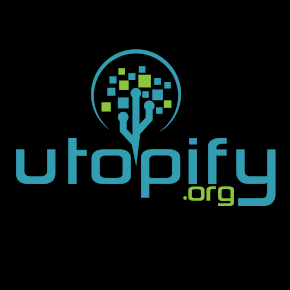I want to find the most sustainable operating system, because computers nowadays waste a lot of energy, because of data collection and data processing. Avoiding unnecessary processes and using resources in a mindful way could reduce the CO2 output on the whole world.
This discussion grew very fast and I put all links to other platforms in the end of the blog article.



It’s interesting that Fedora (and some other distros) are able to do partial updates. This is a huge plus imho, because updates are really energy-intensive (even if not compiled locally) and the reason why I want Debian (stable) is, it gets less updates in terms of, it must be stable before it gets to stable. In the testing branch you would get the bugs as an update and then the fix as another update.
My theory is I can avoid not wanted updates by just using a stable system. And at this point I am afraid that Fedora wouldn’t fit in this logic, because it is like the testing branch. On the other hand it could get the fanciest stuff and I don’t need flatpak/appimage anymore. Okay, I walk in circles again…
CentOS as a workstation? This sounds interesting! I only know it for servers and I thought it was created for servers, but distrowatch says it comes with a DE and it was even discontinued in 2020. I have not noticed anything about it.
And it might make life easier, because you don’t have to learn different things if you have the same system on your workstation and on your server, like different package managers, which reminds me… I still have a v-server running some stuff with CentOS release 6.10 (Final) on it. And the only way it is still on 6 was, that I found it too complex to update and I was afraid I would break it.
But I have to say I’ve never got comfy with yum, maybe because I just used too much apt and pacman in life. Wait… Fedora is using dnf… I thought CentOS is based on Fedora/RHEL. Doesn’t it mean they use the same package manager? Do I have to learn different package managers if I use Fedora as workstation and CentOS for servers?
And I had the problem, that there was no python3 on CentOS and it must be installed by hand, which was a mess and I wouldn’t do it again.
What package manager do you use for servers to have the applications you need? Docker? Is this the way to install stuff like python on CentOS?
In another discussion someone already mentioned, that if you have updated a fedora workstation, it can be used as an update server and it doesn’t sound really hard to configure all other pcs to use the one pc as an update server in the same network. It would definitely deduce the carbon footprint compared to update all workstations over the internet separately. Do you know how this is called, because I forgot it and really would like to get a tutorial for it.
It’s multi-purpose. It mostly gets used for servers, but it can be used as a client.
The CentOS project went through a repositioning in the last couple of years, and things got weird there for a minute.
CentOS 8 is EoL. CentOS Stream 8 is still supported, and there wasn’t significant differences between 8 and Stream 8. CentOS Stream 9 is the latest version, and it’s supported.
CentOS was repositioned to be the upstream of RHEL instead of downstream. In practical terms, CentOS gets packages slightly before RHEL does, and there are more companies and people working on adding software to CentOS then RHEL.
There are a few true downstream rebuilds of RHEL, like Rocky Linux, but it’s too early to tell if they’re going to be around long term.
dnfin included in CentOS Stream 8. There is also ayumcompatibility package installed, which aliasesyumtodnf.dnfandyumwork the same way, as far as users are concerned. Knowing one is basically knowing the other.Going forward,
dnfis the package manager for the Red Hat ecosystem.That’s another thing. Fedora can be upgraded in place. CentOS and RHEL subscribe to the clean install philosophy.
Python3 has been included in the repos since CentOS 7.
It’s a mixture of things depending on what I need.
I do ops and dev work on my desktops/laptops, so there’s Flatpak for GUI tools, GUI and CLI tools from RPMs, services installed from RPMs, some container tools, and custom installs. It’s very much not a basic install.
Servers have stuff from RPMs, containers, and custom installs.
It depends on what you need. If you want to do some Python development for yourself, using a newer version of CentOS and installing Python from the repos is the easiest way.
Containers are a good way to isolate software from the base system, but they add more complexity and systems to manage.
Toolbx is a good way to create disposable environments to work in.
Toolbx
https://containertoolbx.org/
Pkgs.org is a good resource to find packages in the various repos.
https://pkgs.org/search/?q=python3